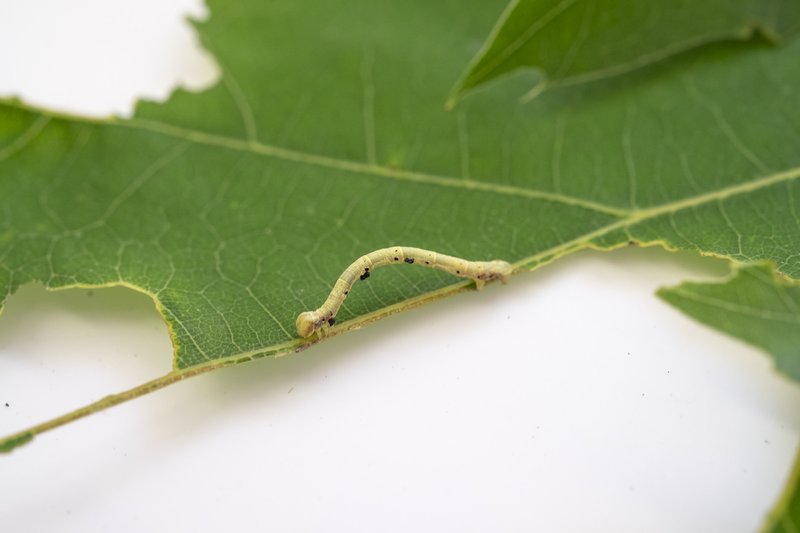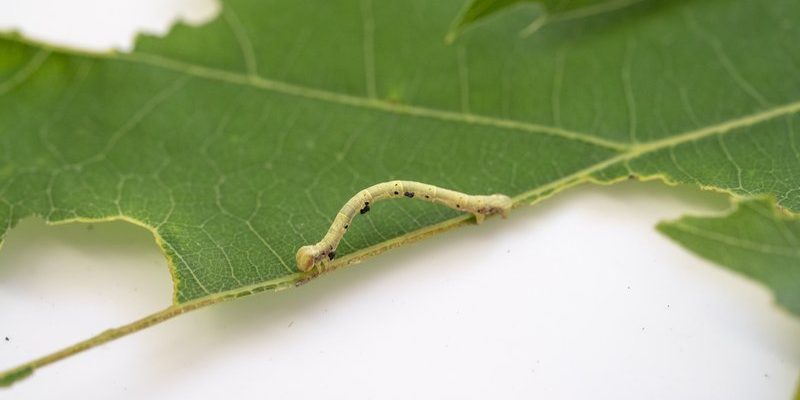
Organic methods can be a bit like working with nature instead of against it. Picture yourself as a gardener who encourages the natural balance of your ecosystem while still sending those pesky inchworms packing. Whether you’re a seasoned pro or just starting your gardening journey, understanding how to manage these critters organically is essential. Let’s dig into some practical and effective strategies to keep inchworm populations in check.
What Are Inchworms and Why Are They Problematic?
Inchworms, which are the larvae of various moth species, get their name from their unique method of movement. They “inch” along as they mimic the motion of a measuring tape. But despite their cute name, these pests can inflict serious damage to your plants by feasting on their leaves. It’s not uncommon to find them hanging out on young shoots, creating a landscape that looks more like a buffet than a garden.
These little pests typically thrive in spring and early summer. Their presence can lead to defoliation and stress for your plants, which might weaken them and make them more susceptible to diseases and pests. This is why keeping their populations under control is crucial. Combatting them with organic methods ensures that you’re not harming beneficial insects or the environment in the process.
Identifying Inchworms
Before you can take action, it’s important to correctly identify inchworms. They usually measure around an inch or two long and are often green or brown, blending perfectly in with the leaves they eat. You might spot them hanging from branches or nestled among foliage. Here’s a quick rundown of what to look for:
- Color: Most inchworms are green or brown, allowing them to camouflage easily.
- Movement: Unlike traditional caterpillars that move in a wave-like motion, inchworms move by contracting their bodies, creating an inching effect.
- Damage: Check your plants for missing leaves or chewed edges, which are telltale signs of an inchworm infestation.
Being able to identify inchworms early can help you take swift action before they do significant damage. Look closely at your plants, especially in the morning or late afternoon, when these pests are most active.
Natural Predators: The Allies in Your Battle
One of the best ways to control inchworm populations organically is to invite their natural predators into your garden. Birds, wasps, and even some ground beetles love a good inchworm snack. By creating a habitat that’s friendly to these beneficial creatures, you can help keep inchworm numbers down naturally.
Here’s how you can attract these predators:
- Plant diverse flowers and herbs: A variety of plants can attract birds and beneficial insects.
- Avoid using pesticides: This ensures you don’t harm the predators you’re trying to encourage.
- Provide water sources: Simple bird baths or shallow dishes can entice birds to visit.
By keeping your garden a safe haven for these natural hunters, you’re not only controlling inchworm populations but also promoting biodiversity. It’s a win-win situation!
Handpicking: The Classic Control Method
If you’re dealing with a small number of inchworms, one of the simplest solutions is to handpick them off your plants. While it might seem tedious—kind of like searching for a needle in a haystack—it’s an effective way to get immediate results.
Here’s how to do it:
1. **Scout your plants**: Check especially on the undersides of leaves, where inchworms like to hide.
2. **Use gloves**: It keeps your hands clean and protects you from any potential irritation.
3. **Drop them in soapy water**: This will ensure they won’t climb back onto your plants.
This method allows you to quickly reduce inchworm populations without introducing any chemicals to your garden. Plus, it gives you a chance to inspect your plants for any other issues at the same time.
Homemade Organic Sprays
When handpicking isn’t enough, you can turn to homemade organic sprays. These can deter inchworms and other pests without leaving harmful residues on your plants. Here are two popular recipes:
1. **Soap Spray**: Combine 1 tablespoon of mild liquid soap with a quart of water. Spray this directly on the inchworms and affected foliage. The soap suffocates them without harming your plants.
2. **Neem Oil Spray**: Mix neem oil with water according to the package instructions. Neem oil disrupts the life cycle of insects, making it harder for them to reproduce.
When using sprays, always test a small area of your plants first to ensure they won’t be negatively affected. Timing is essential too—spray in the evening or early morning to avoid harming beneficial insects.
Encouraging Healthy Plants Through Care
Healthy plants are less susceptible to pest infestations, including inchworms. By focusing on strong plant health, you can naturally reduce the chances of an infestation in the first place.
Here are some ways to keep your plants vibrant:
- **Water them properly**: Ensure your plants receive adequate water to thrive but avoid overwatering, which can lead to fungal issues.
- **Fertilize wisely**: Use organic fertilizers to provide necessary nutrients without chemical repercussions.
- **Rotate crops**: This helps disrupt any lifecycle the inchworms might have established in your garden.
By nurturing your plants, you’re essentially building a fortress against inchworms and other pests. Remember, a little care goes a long way.
Managing inchworm populations organically is all about finding the right balance between protecting your plants and supporting the local ecosystem. By using methods like encouraging natural predators, handpicking, and making homemade sprays, you can keep inchworms at bay without resorting to harmful chemicals.
Remember, gardening is as much about patience as it is about action. With a little effort, you’ll foster a healthy environment that not only thrives but also keeps those inchworms in check. So, roll up your sleeves, embrace the organic journey, and watch your garden flourish!

